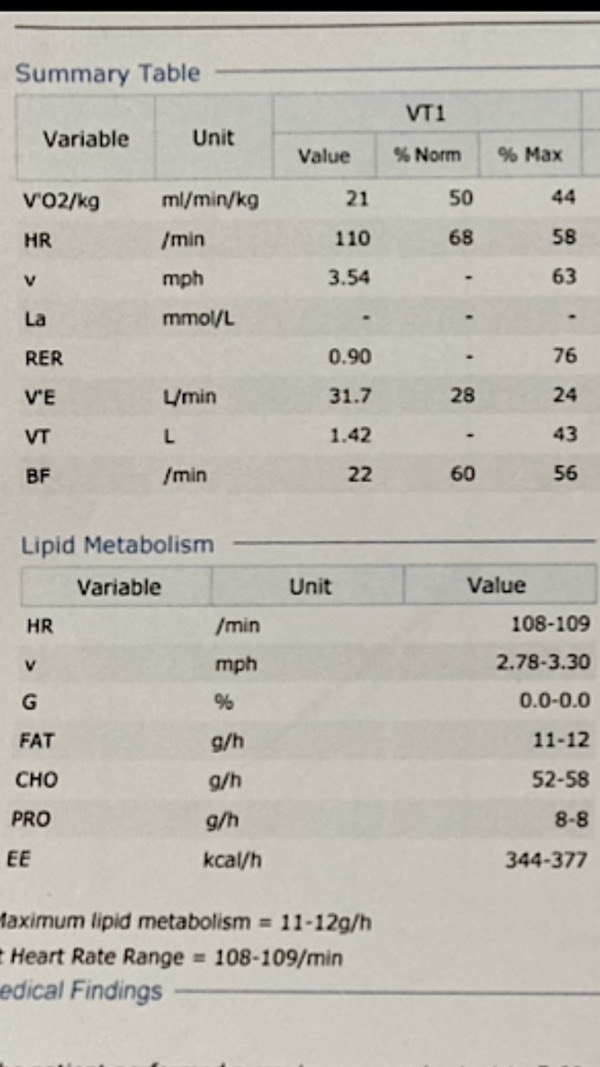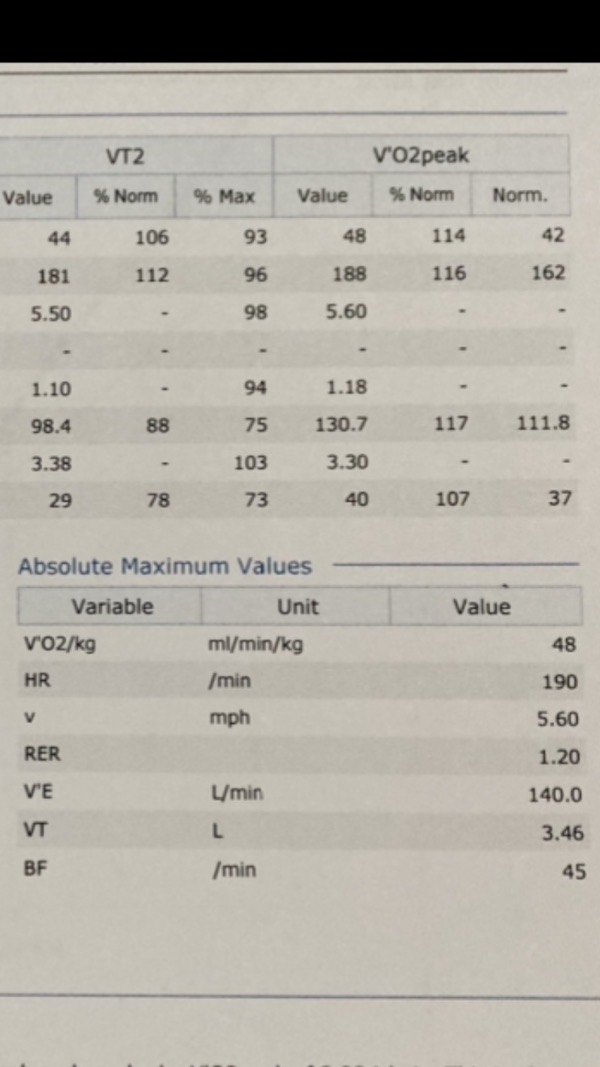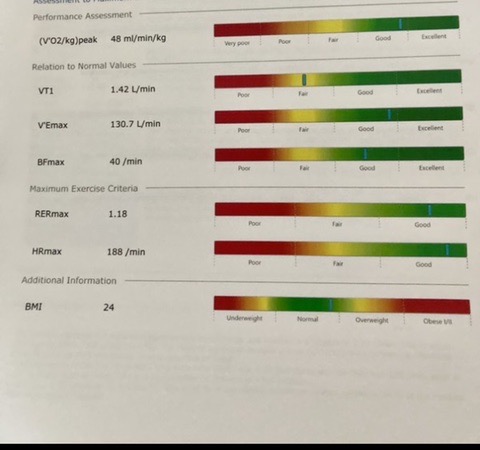Hi all,
I’ve been reading f the forum for a while. Just decided to post for the first time as I’ve had some issues and I know there are some smart people here that may be of some help.
Long story short I’ve had unexplained shortness of breath with exercise for months. Docs can find nothing cardiac or pulmonary to suggest a problem. I decided to seek out a CPET with local physiologist as I wasn’t getting anywhere with the docs. My Vo2 was fine. It was 48. Which for my age and stats is 114% predicted. Nothing to brag about but still better than average and I haven’t been exercising like I used to due to my breathing issues.
My concern was the VT1, which came in at 44% of Vo2 max.
Anyone out there with knowledge of VAT that might weigh in with an opinion here? I’m still learning about the VT1, but it certainly has me awfully curious given it’s way lower than it should be.
I’ll attach the numbers in case you’re curious.
While 44% is technically low, I would initially question the accuracy of the chosen VT1. Often the automatic values are suspect and those chosen through inspection are dependent on the skill and knowledge of the tester.
Do you have other measures? Blood panels, Oxygen saturations, etc.
Additionally, this would not be a “cause” of your shortness of breath. The underlying mechanism would still be unknown.
In my experience “shortness of breath” is a very difficult symptom to understand because it means many things to many people. Can you describe further what this means to you, if / when you felt a change, what events preceded that change (ie moved to a new house, got a dog, etc.)
Unexplained, although it’s likely related to acid reflux disease. I get short of breath after eating and with exertion. Can’t reach top of my breath. I’m very fit, so I can push through this inconvenience, although I’m not myself. Could be a small airways issue, although it’s not asthma as inhalers do nothing. I had a surgery to correct the reflux. Took 8 weeks off exercise. Had a cpet test at 8 weeks and Vo2 was 32 or 88% predicted. Started working out for 3 weeks, 1 mile timed runs, was at 10 mins and now I’m under 8:00. It jumped to 48 or 114% predicted in just 3 weeks time. However, VT1 remained low in both tests. My physiologist seems to think it’s no big deal in regards to VT1. Says to not work so hard and to slow the heart rate. Essentially, go back to 10:00 mile runs. He seems to think that will boost VT1.
No blood panels. I can’t upload my results for some reason. If anyone knows how to upload a file let me know. Always says size too large. All other results from test were normal, but my physiologist mentioned I had one of the lowest lipid measurements he’s seen. Apparently I don’t burn fats well. Was a bit beyond my comprehension as I’m new to it all.
not a doctor, no real first hand experience, just my 2ct. My wife suffered from reflux and as a consequence her lungs became very sensitive. Basically, any stress like dust or deep inhalation were problematic.
Maybe your lungs as well are still just very sensitive and maybe you have some very low level of inflammation still lingering around in your lungs. For my wife, after fixing the reflux going on a cortisone inhaler for a few weeks solved all the issues.
Good luck
Uli


